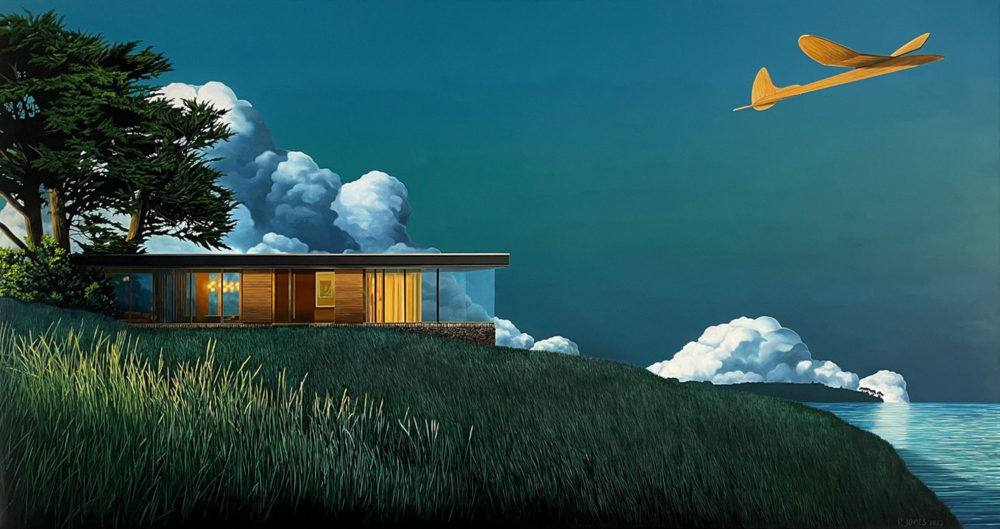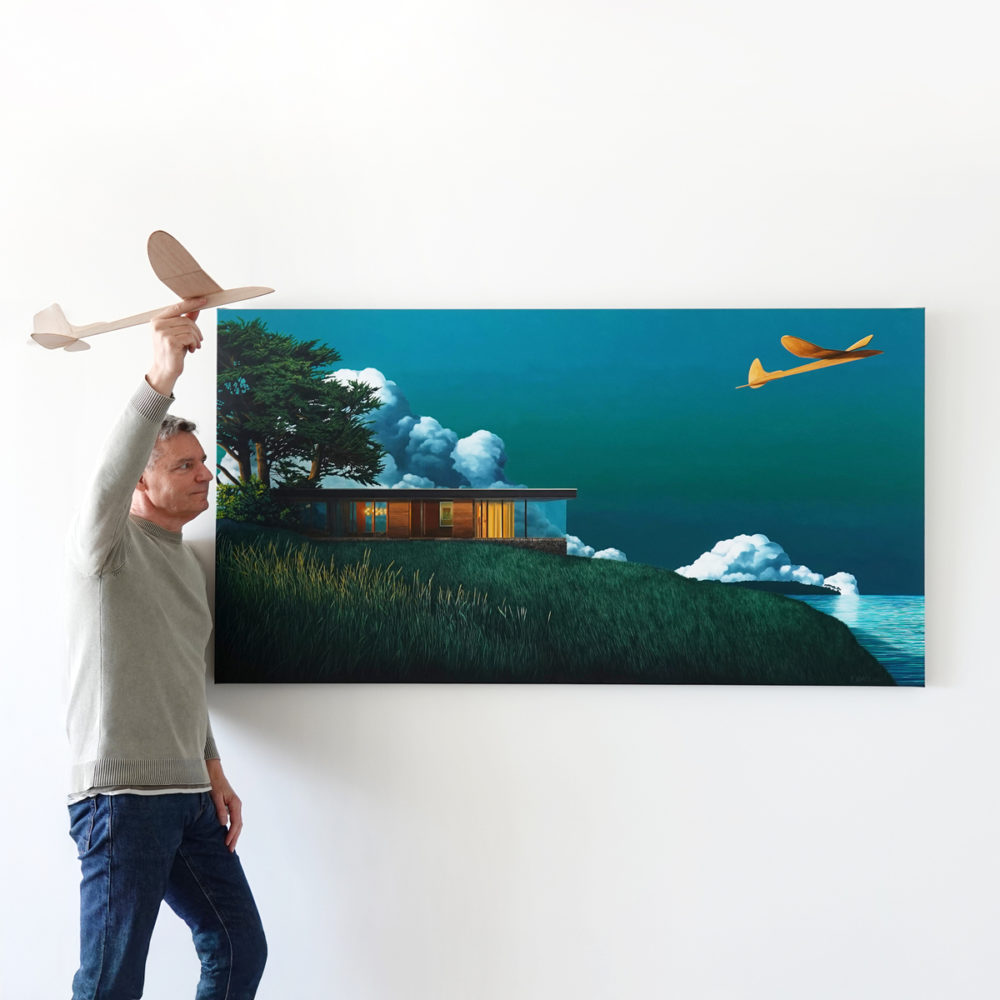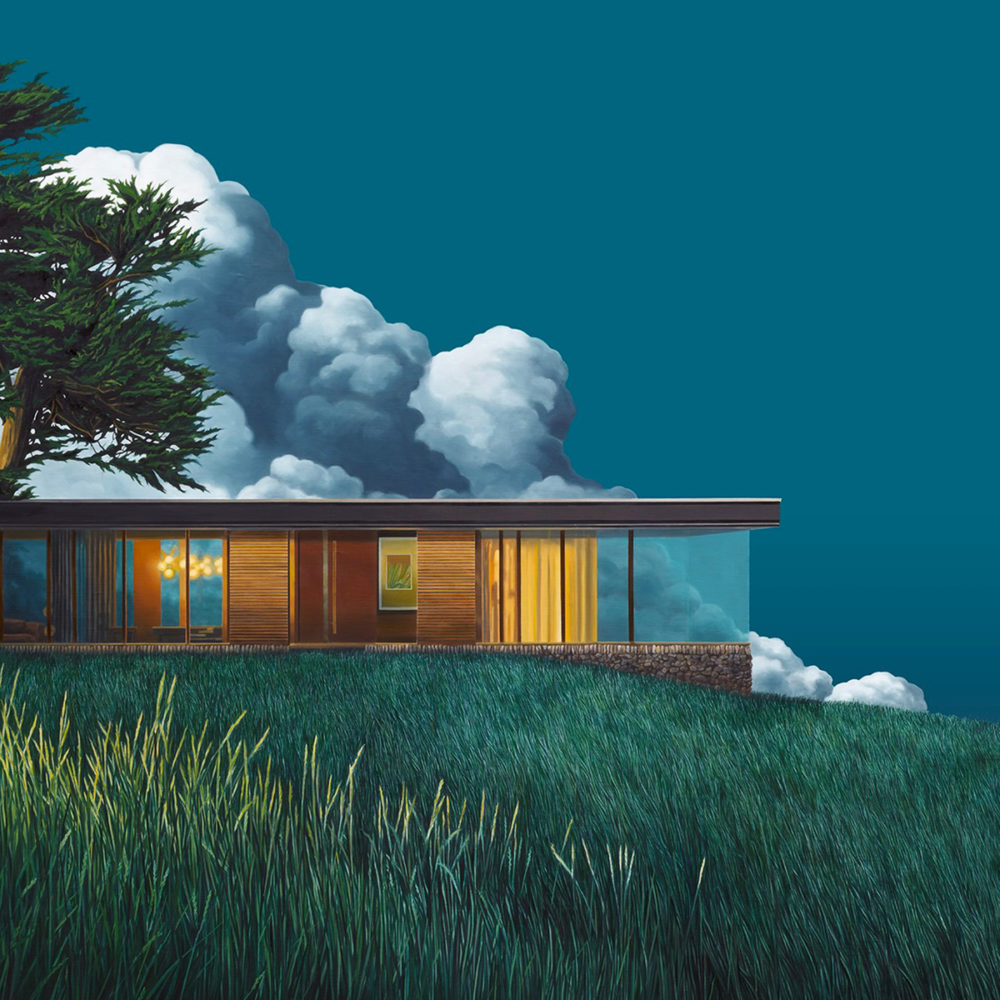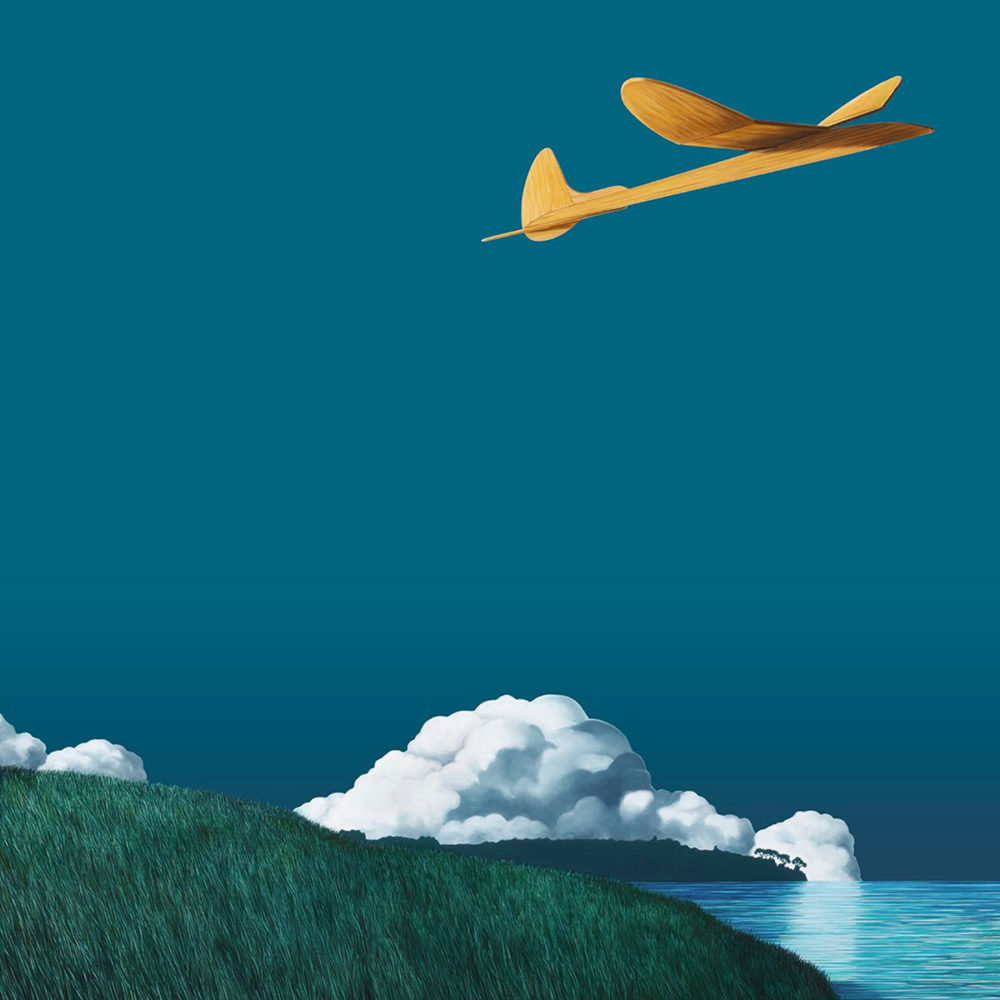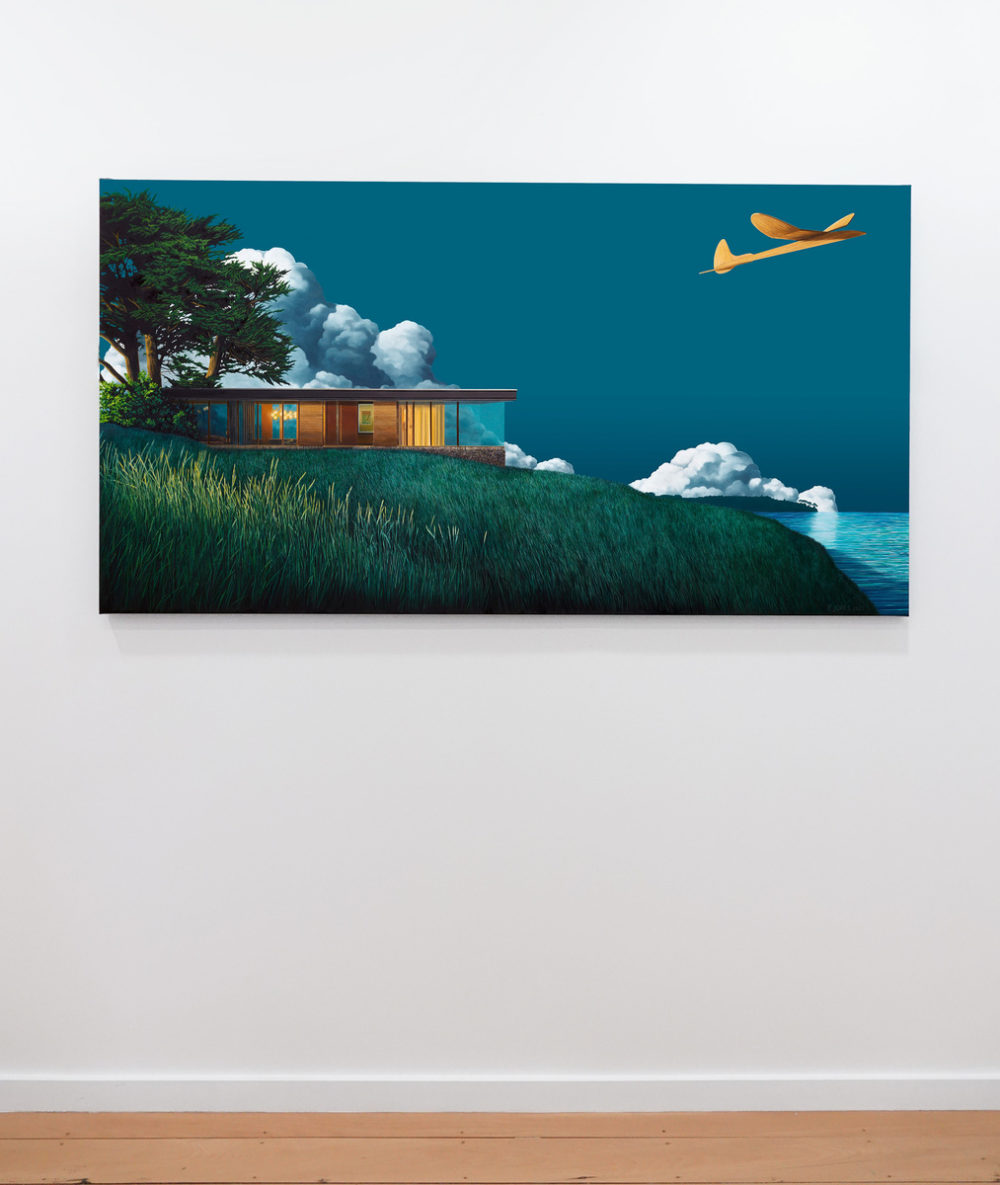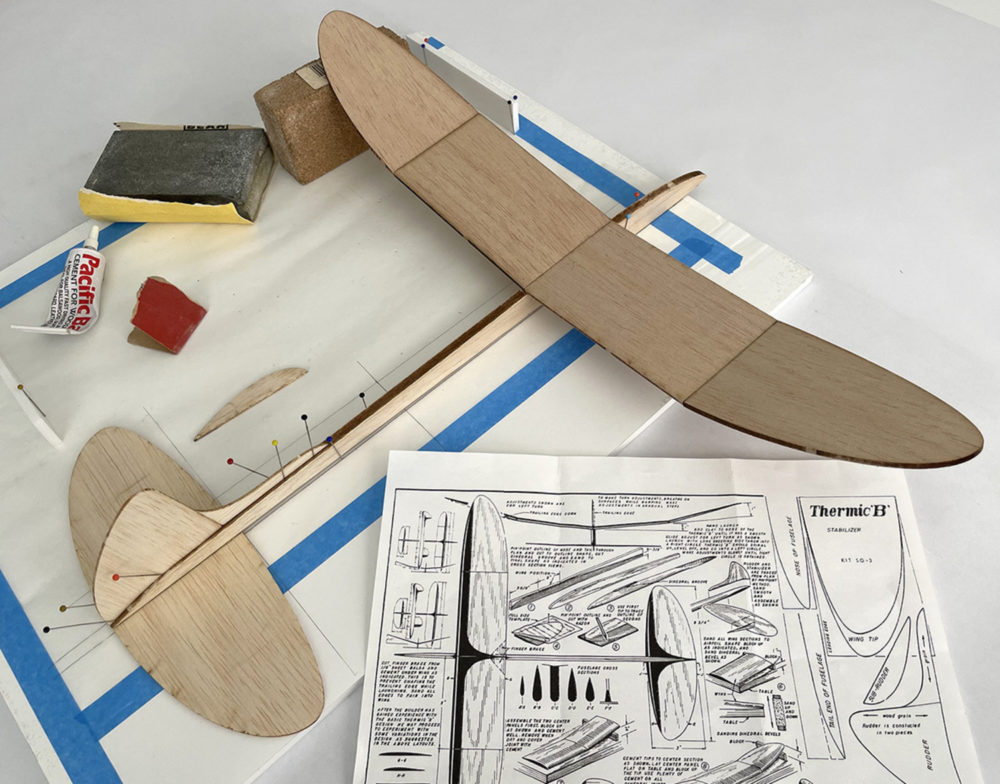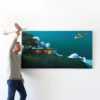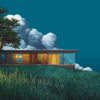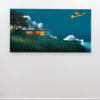Ross Jones
Into the Blue
Oil on Fine Portrait Linen
950 x 1800 mm
Sold
Sometimes, the most inexpensive of toys can offer the greatest enjoyment. Take balsa wood gliders, for example. These packaged gliders cost only a few cents, could be assembled in minutes, and were available in most toy stores. Millions were sold in the 70s, providing kids with hours of entertainment and a dream of flying real aeroplanes one day.
Jetco produced a range of gliders, from the compact Thermic 18 to the awe-inspiring Thermic 72, with a wingspan that reached an impressive 72 inches. These were not mere toys but a challenge to the modeller’s skills. Yet, it wasn’t just the models themselves that enchanted young minds; the box art and instructions were a form of art, reflecting an era’s charm. The graphic design and hand lettering transported enthusiasts into a world where craftsmanship met creativity. The cardboard packages contained the promise of aviation dreams, all for less than a dollar. Assembling these kits was a labour of love. Balsa wood required delicate cutting and shaping, transforming raw material into aerodynamic marvels. The simpler balsa wood plane counterparts were quicker and easier to build, but the Thermic range of gliders required patience and skill, resulting in superb handmade creations.
What made these balsa wood gliders truly special was their resilience. They could endure the whims of careless flight, bouncing back from crashes into trees. These balsa wood gliders were the epitome of simplicity. At a low price point, parents found it hard to resist their children’s pleas for these engaging toys. Countless kids, not only in the 70s but spanning nearly a century, found joy in the timeless simplicity of balsa wood flight. Remarkably, these treasures of yesteryear still grace the shelves today, though you might need to search harder to discover them. The charm of balsa wood sailplanes is a testament to the enduring magic of simpler times.
-Ross Jones
Ross Jones is a contemporary painter creating works that evoke a heady sense of nostalgia and elevated playfulness.
Working from his studio overlooking the Hauraki Gulf north of Auckland, Jones’ fusion of playful realism incorporates elements of the surreal. Each meticulously devised painting offers hints at various narratives as the artist invites the viewer to engage with his role as storyteller.
“I love the phrase “Don’t let the truth get in the way of a good story,” so as you view my paintings, don’t let your imagination stop you from seeing the bigger picture. How far the journey takes you is entirely up to you.” – Ross Jones
